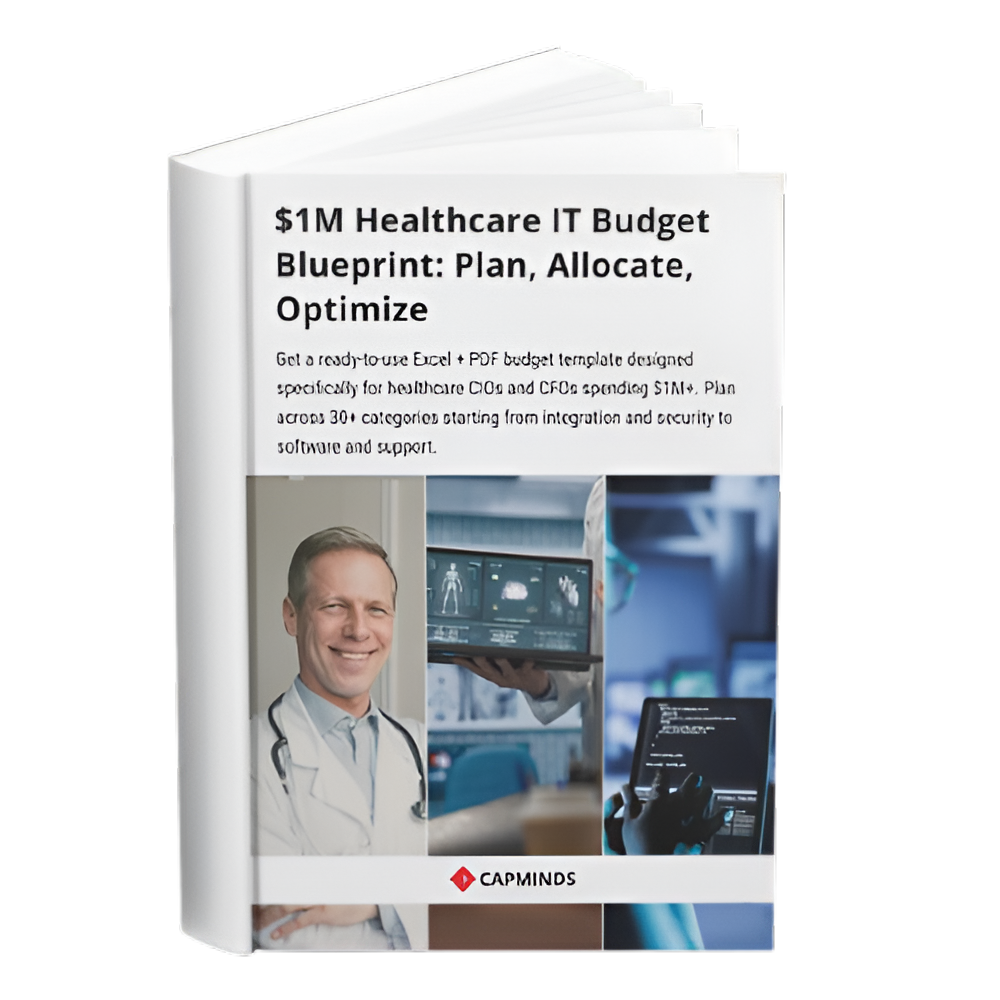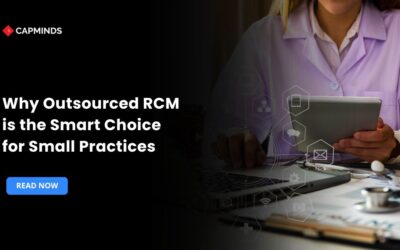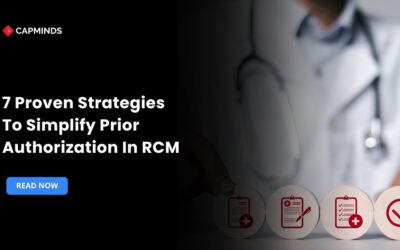Cloud-Based RCM Architecture: Building Scalability into Your Revenue Operations
For many healthcare organizations, revenue cycle management is the financial spine that connects patient encounters to dollars collected. RCM tracks every step – from scheduling and insurance verification through coding, claim submission, payment posting, denial management, and patient collections. In the past, manual workflows and on-premise software have dominated RCM. These systems are frequently fragmented, decades old, and challenging to scale.
Reimbursement delays, high denial rates, and restricted financial performance visibility are the outcomes. Revenue risks associated with legacy infrastructures include billing errors and delays, low patient involvement, data silos, excessive IT expense, and compliance problems. To compete in today’s fast‑moving healthcare market, providers need a smarter foundation.
Cloud‑based RCM isn’t just a technology upgrade – it’s a revenue strategy. A modern architecture built on the cloud offers elasticity, real‑time data access, and seamless interoperability with clinical and financial systems. This article explains the components of a cloud‑based RCM architecture, explores the business benefits, and highlights implementation considerations. The goal is to help business leaders build scalability into their revenue operations and position their organization for growth.
The Case for Moving RCM to the Cloud
Limitations of Traditional RCM
Traditional RCM systems were designed for a paper‑based world. They often require staff to re‑enter the same data across multiple modules and lack integration with electronic health records. Manual work increases the likelihood of errors and denials.
As patient volumes fluctuate or new services are added, on‑premise servers become bottlenecks. Moreover, it is challenging to track income in real time due to antiquated technology. Instead, financial executives must rely on quarterly reconciliations or static reporting.
These legacy limitations translate into tangible revenue risks. Cloud‑driven transformation paired with operational redesign can improve costs and revenue by 20–30%. Another example: manual payment posting can take more than two minutes per claim, whereas robotic process automation reduces that to around 2 seconds. Automating just nine common RCM transactions could save US$16.3 billion annually.
Related: Complete Guide to RCM Challenges and Solutions 2025
Why Cloud‑Based RCM Is Different
On-demand resource scaling is made possible by cloud systems.
- Microservices architectures and auto-scaling compute power make sure that systems adapt as patient numbers increase and contract to save money when volumes decrease.
- Cloud providers handle security, upgrades, and hardware, allowing IT teams to concentrate on important projects.
- Clinicians and billing personnel can access data and applications from any location with a secure internet connection because they are stored off-site.
Cloud-based EHR platforms provide real-time patient, demographic, and billing data and link with additional facilities, allowing providers to record charges instantly and monitor the status of claims without having to log into several systems. Real-time insights are also made possible by cloud-based RCM technologies. Cloud solutions offer instantaneous visibility into important parameters, including charges, reimbursements, and refusal patterns, when compared to older systems.
Dashboards for advanced analytics show operational inefficiencies and revenue gaps. Leaders may make data-driven choices more quickly by integrating financial data with healthcare operations.
Lastly, interoperability is supported by cloud systems. API-driven systems communicate with payers, clearinghouses, and other providers via FHIR and EDI standards. Robust security is another feature of contemporary RCM platforms. OAuth 2.0, OpenID Connect, role- and attribute-based access control, and audit trails guarantee adherence to HIPAA and new CMS regulations. These regulatory requirements are too much for legacy point-to-point interfaces to handle.
Core Components of a Cloud‑Based RCM Architecture
1. Multi‑Tenant Platform and Infrastructure
A multi-tenant cloud platform, which is a shared environment that hosts several providers while maintaining data segregation, forms the basis. Because improvements are implemented once and made immediately available to all renters, this strategy lowers costs and streamlines updates.
Instead of using monolithic software, modern platforms use microservices, which allow each service—such as eligibility verification, coding, and claims submission—to scale independently. Compute resources are guaranteed to grow during periods of high volume and shrink during periods of low volume thanks to auto-scaling. For companies that aren’t ready to fully relocate, hybrid models link on-premise data with cloud services via secure tunnels (AWS Direct Connect, Azure ExpressRoute).
2. API‑Driven Integration Layer
EHRs, practice management systems, clearinghouses, payers, and patient portals are all connected to the RCM platform via an API layer. Two ecosystem models: facilitator‑driven platforms managed by a central vendor and provider‑owned platforms operated by hospital networks.
- Standardized APIs take the place of custom point-to-point interfaces in both models.
- Real-time interchange of eligibility data, prior authorization status, claim submissions, and remittance advice is made possible by using FHIR-based billing APIs in conjunction with EDI transactions (270/271 eligibility checks, 278 previous authorizations, and 837 claims).
All parties involved—providers, payers, and billing vendors—work from the same data thanks to this common layer, which also removes data silos.
3. Revenue Cycle Microservices
Within the cloud platform, discrete microservices handle key RCM functions:
| Function | Description & Business Impact |
| Patient Access & Eligibility | In order to minimize denials and laborious follow-ups, digital registration, automated eligibility verification, and authorization procedures collect precise patient data up front and confirm coverage in real time. |
| Charge Capture & Coding | Coding engines receive services obtained through mobile or EHR integration and convert diagnoses into standard codes (ICD-10, CPT).. AI‑assisted coding tools enhance accuracy and flag missing documentation. Automated charge capture prevents lost revenue and shortens claim preparation. |
| Claim Generation & Submission | The system automatically compiles and cleans claims; before to submission, it verifies payer regulations. When problems occur, personnel can act swiftly thanks to real-time claim status information. Automated processes speed up reimbursement and lessen administrative burden. |
| Payment Posting & Reconciliation | Accounts are instantly linked to incoming payments from patients and insurance. Self-service payments and customizable plans are made possible via integrated patient portals, which raise patient satisfaction. |
| Denial & Appeal Management | Analytics identify patterns of denials; automated workflows route rework to the right team and track appeal deadlines. Predictive models forecast which claims are at risk and suggest fixes. MGMA studies show RPA can reduce the posting time of a claim from 2.10 minutes to 2 seconds. |
| Reporting & Analytics | Clinical, operational, and financial data are combined in real-time dashboards to show revenue trends, cash flow, staff productivity, and denial rates. AI and advanced analytics offer revenue opportunities and predictive insights. |
For real-time analytics, these microservices post events to a central data lake and communicate via APIs. New features can be implemented separately without affecting the system as a whole because each service is modular.
4. Security, Compliance, and Identity Management
Security needs to be integrated into the design since healthcare data is subject to strict regulations. Only authorized users can view protected health information thanks to fine-grained role-based and attribute-based constraints; API gateways enforce OAuth 2.0 and OpenID Connect for authentication and authorization. Consent management functions control data sharing across organizations.
Thorough audit trails assist in meeting HIPAA regulations and offer accountability. In order to comply with legal requirements, cloud providers also provide encryption both in transit and at rest, ongoing monitoring, and automatic patching. To store structured and unstructured data with built-in encryption and compliance, several businesses employ lakehouse designs, which combine data lakes and warehouses.
5. Real‑Time Patient & Provider Interfaces
Clinicians, back office employees, and patients can access web-based and mobile interfaces on modern RCM solutions.
- From any device, providers may access analytics dashboards, confirm insurance eligibility, and record charges at the time of care.
- Through self-service portals, patients may examine statements, ask questions, and pay balances, increasing transparency and lowering contact traffic.
Clinical and financial data are kept in sync by these interfaces’ smooth integration with EHRs.
Business Benefits of Cloud‑Based RCM
Improved Revenue Capture and Cash Flow
By lowering errors, expediting claim submissions, and eliminating denials, cloud-based RCM increases collections. Every service is billed thanks to AI-enabled coding and charge capture, and uncovered services are avoided thanks to real-time eligibility checks.
Automated payment posting accelerates cash flow. After deploying cloud-based tools, Proliance Surgeons doubled patient payments, and a healthcare practice raised yearly collections by more than $10 million through streamlined RCM.
Cost Efficiency and Scalability
The capital cost of buying and maintaining hardware is eliminated by cloud platforms. Instead, expenses are distributed among tenants and charged as an operational expense. Without over-provisioning, providers can adjust capacity to fit patient numbers.
Cloud‑based RCM systems are more cost‑effective for clinics of all sizes and reduce the need for large billing departments. Durapid emphasizes that shifting from fixed infrastructure to scalable, pay‑as‑you‑grow environments transforms the cloud into a revenue enabler.
Better Analytics for Decision‑Making
Leaders can identify anomalies early and take remedial action thanks to real-time dashboards, which offer financial and operational visibility across the revenue cycle.
Unified reporting for eligibility checks, prior authorizations, coding, claim status, and payment reconciliation is provided by platform-based RCM solutions. Organizations can discover weak regions and assess performance across clinics with consistent data.
Enhanced Patient Experience
Patients can create payment plans, view bills, ask questions, and make online payments through digital portals. Confusion is decreased and customer satisfaction is raised with clear statements and open pricing.
Providers can log charges on the spot and collaborate with billing teams remotely, eliminating the delays of paper forms. When combined with appointment scheduling and telehealth, cloud‑based RCM becomes part of a holistic digital front door.
Regulatory Compliance and Reduced Risk
Secure data interchange is necessary to comply with HIPAA, the CMS Interoperability and Prior Authorization Final Rule, and other laws.
Sensitive data is protected by platform-based RCM with integrated OAuth 2.0, OpenID Connect, audit logs, and consent management. Billing mistakes and fines are avoided with the aid of automated coding support and compliance notifications. While maintaining compliance, scalable, interoperable solutions enhance cash flow and lower denials.
Staff Productivity and Outsourcing Flexibility
Automation frees staff from repetitive data entry and claim tracking. RPA and AI significantly reduce the time to post payments and manage denials. The magnitude of productivity benefits is highlighted by the study’s estimate of potential savings of US$16.3 billion.
Outsourcing to specialized RCM suppliers is also becoming more common; according to a recent survey, 61% of providers intend to outsource some RCM duties in order to cut expenses and take advantage of specialized knowledge. By allowing providers to collaborate inside the same infrastructure and securely access data, cloud systems simplify outsourcing.
Related: What to Look for in an RCM Platform: A Buyer’s Guide for 2025
Implementation Considerations
Assess Your Current State
A comprehensive gap analysis is the first step towards a successful shift; pinpoint problems, persistent rejections, ineffective workflows, and underutilized technologies. Assess contract administration: Strong contract management systems may be required to recoup underpayments because payers make mistakes on 19.3% of claims.
Choose the Right Platform and Partner
Scalability, integration capabilities, compliance features, analytics, and vendor support are important considerations when choosing a cloud-based RCM solution. Make sure the solution has an API-level connection with your practice management and EHR platforms. Consider whether you need a facilitator‑driven ecosystem (a vendor‑run platform) or a provider‑owned platform.
Plan for Data Migration and Training
It takes careful preparation to move current billing data and workflows to the cloud. When using cloud RCM, staff training and data movement are frequent obstacles. Create a plan for a phased migration, test it with trial groups, and teach employees on the new procedures. putting changes into practice in reasonable stages and using milestones to monitor progress.
Transform Your Revenue Cycle with CapMinds RCM Services
Healthcare’s financial success depends on an agile, interoperable, and scalable RCM ecosystem, and that’s exactly what CapMinds delivers.
Our Cloud-Based Revenue Cycle Management Services help hospitals, practices, and health systems modernize their billing infrastructure, reduce revenue leakage, and accelerate reimbursements, all while maintaining full compliance and interoperability.
With CapMinds as your technology partner, you gain:
- End-to-End RCM Services – Eligibility verification, coding, claims submission, payment posting, denial management, and analytics.
- EHR & Cloud Integration Services – Secure API-based connectivity for seamless data flow across clinical and financial systems.
- RPA & AI-Driven Automation – Streamlined workflows that cut claim processing time and reduce manual errors.
- Compliance & Security Services – HIPAA-ready, FHIR-driven infrastructure ensuring complete data protection.
Reimagine your revenue operations with CapMinds’ digital health tech services and solutions, built to scale with your growth.
Talk to our experts today to optimize your RCM performance.




